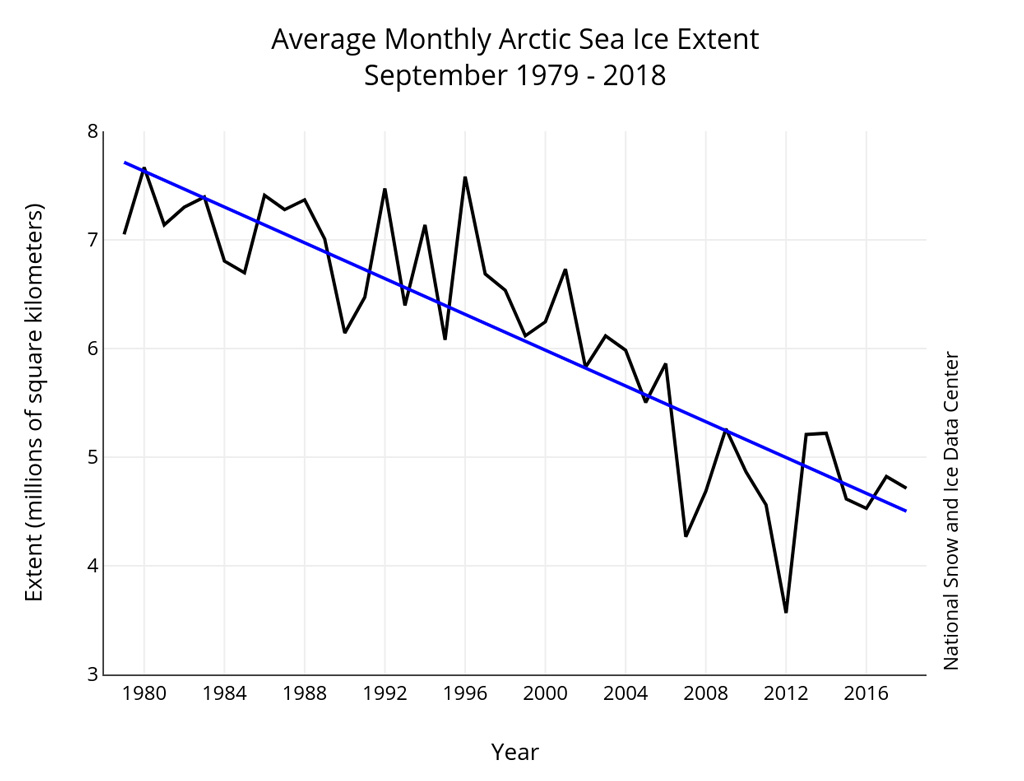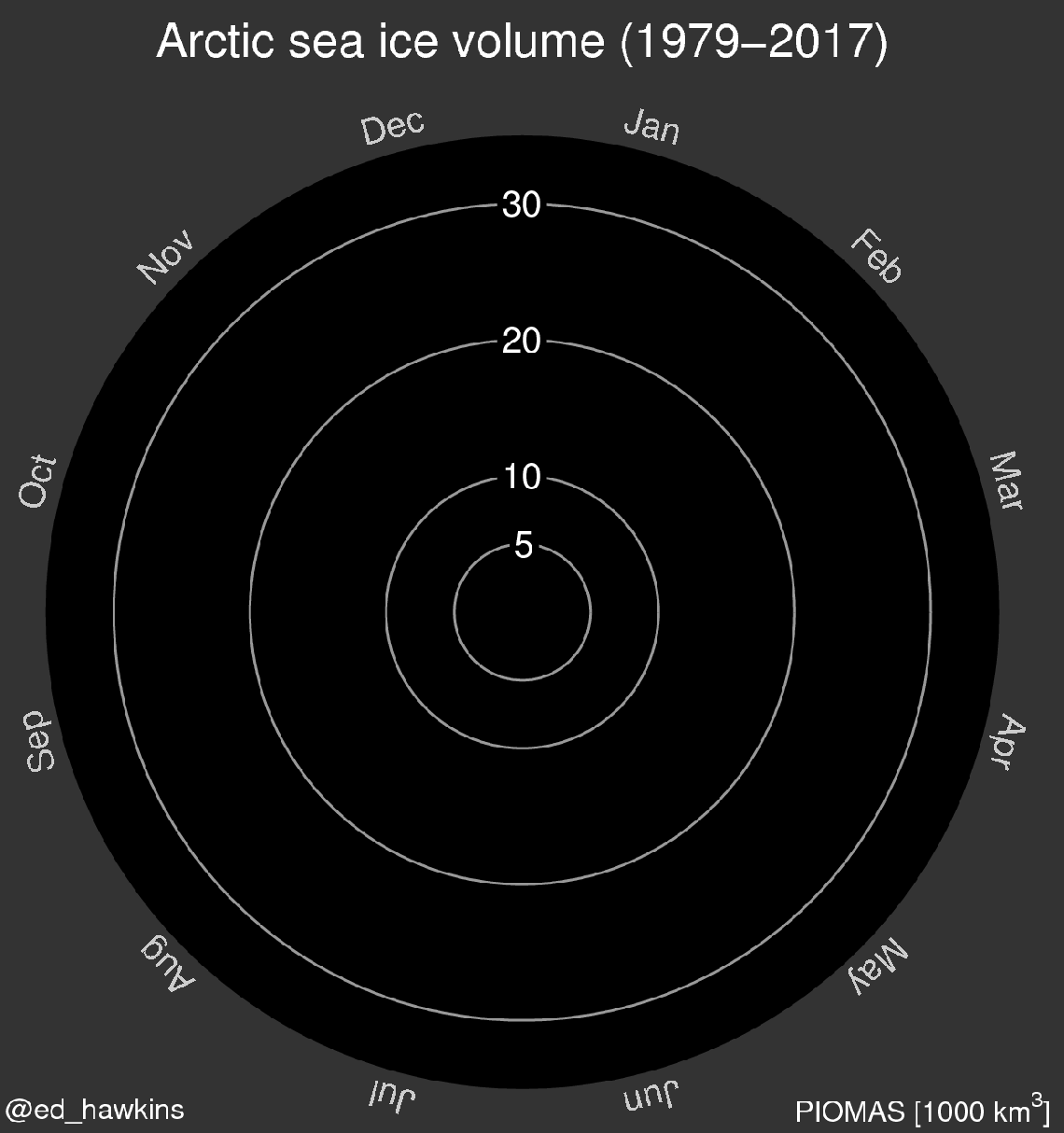~Have you heard that Arctic sea ice loss could cause a climate catastrophe? Check out our new Arctic sea ice Fact-Check post to see if these claims really add up!~
One of the best-studied potential Climate Tipping Points is the retreat of Arctic summer sea-ice, which has decline from an average area of ~7.6 million square kilometres each September to only ~4.6 million square kilometres in September 2018. It’s predicted that the Arctic could become “ice-free” by 2050 if not sooner, although the trend will be a bumpy ride.

The key to explaining this rapid decline is “positive feedback loops“. Strong positive feedback loops can quickly amplify small changes – this happens when a change in A leads to a change in B which in turn produces more change in A and so on. This is what happens when you hear feedback from a mic and a speaker being too close to each other – the noise picked up the mic is amplified by the speaker which is picked up by the mic again.

Here the positive feedback loop is caused by the ice-albedo effect (illustrated above). Sea ice is very white and reflective – we say it has a high ‘albedo’ – and reflects back more solar energy than the darker open sea. But when global warming melts more sea ice in the Summer than usual this results in a darker sea surface overall than normal, which reflects less solar energy, raises local temperatures, and leads to yet more sea ice loss. If this process isn’t stopped by a negative feedback then a tipping point could be hit beyond which total summer sea ice loss is inevitable.

While melting sea ice has no impact on sea level (only melting land ice can contribute to sea level rise), it does have a big impact on regional climate. Temperatures around the Arctic are rising faster than anywhere else on Earth, with temperatures in Winter 2016 an incredible 11-14 degrees celsius warmer than normal, similar Arctic heat waves in both Winter 2018 and 2019, and Arctic temperatures now higher than they have been for the past 2000 years. This will speed up the melting of the Greenland ice sheet (which is contributing to sea level rise), and may also contribute to more unpredictable weather in regions bordering the Arctic.

Scientists are busy monitoring Arctic sea ice for signs of hitting a tipping point and working out what the impacts of this might be, but to prevent this tipping point being reached would require a slowdown in global warming as soon as is possible.
~This post was updated on 2/4/2019 to with up-to-date sea-ice visualisations and a link to our new Fact-Check post on claims about Arctic sea ice.~


2 Comments